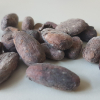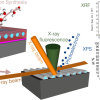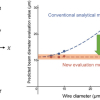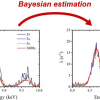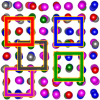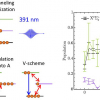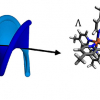
Element-specific X-ray methods play a key role in determining the atomic structure and composition of matter and functional materials. X-ray spectroscopy is sensitive to the oxidation state, the distances, coordination number and species of the atoms immediately surrounding the selected element. A large variety of X-ray spectroscopic techniques have been applied to gas-phase, bulk liquid or solid-state samples, or have been used to probe molecular systems at interfaces. This type of X-ray spectroscopy is predominantly carried out at large-scale synchrotron facilities, or in more recent years with X-ray free electron lasers, probing steady-state and time-resolved material properties.
Solution-phase soft-X-ray absorption spectroscopy (XAS, energy range approximately 0.2–1.5 keV) is not an easy method: experiments need to be done under vacuum conditions, an environment obviously incompatible with the high vapour pressure of water. Furthermore, if measured in transmission, absorption cross-sections demand sample thicknesses in the micrometre and sub-micrometre range. Alternatively, if secondary signals such as X-ray fluorescence are measured, the experiment is limited to comparably large solute concentrations. Using sample cells with thin membrane windows enables control of appropriate sample thicknesses, but sample degradation upon X-ray illumination (or upon pump laser illumination in time-resolved experiments) makes this approach disadvantageous for photolabile molecular systems. Sample refreshment is possible with a liquid jet, generated by pumping a solution through a nozzle with a small orifice, into the vacuum chamber. Single liquid jets have, however, difficulties to implement the required (sub)µm thicknesses.
A collaboration between scientists from the Max Born Institute for Nonlinear Optics and Short Pulse Spectroscopy (MBI), the Helmholtz-Zentrum Berlin (HZB) and the Max Planck Institute for Dynamics and Self-Organization (MPIDS) have now demonstrated the successful implementation of a liquid flatjet with a thickness in the µm range, allowing for XAS transmission measurements in the soft X-ray regime. Here a phenomenon well known in the field of fluid dynamics has been applied: by obliquely colliding two identical laminar jets, the liquid expands radially, generating a sheet in the form of a leaf, bounded by a thicker rim, orthogonal to the plane of the impinging jets.
The novel aspect here is that a liquid water flatjet has been demonstrated with thicknesses in the few µm range, stable for tens to hundreds of minutes, fully operational under vacuum conditions (<10–3 mbar). For the first time, soft X-ray absorption spectra of a liquid sample could be measured in transmission without any membrane. The X-ray measurements were performed at the soft X-ray synchrotron facility BESSYII of the Helmholtz-Zentrum Berlin. This technological breakthrough opens up new frontiers in steady-state and time-resolved soft X-ray spectroscopy of solution-phase systems.
The research has been published in Structural Dynamics.




